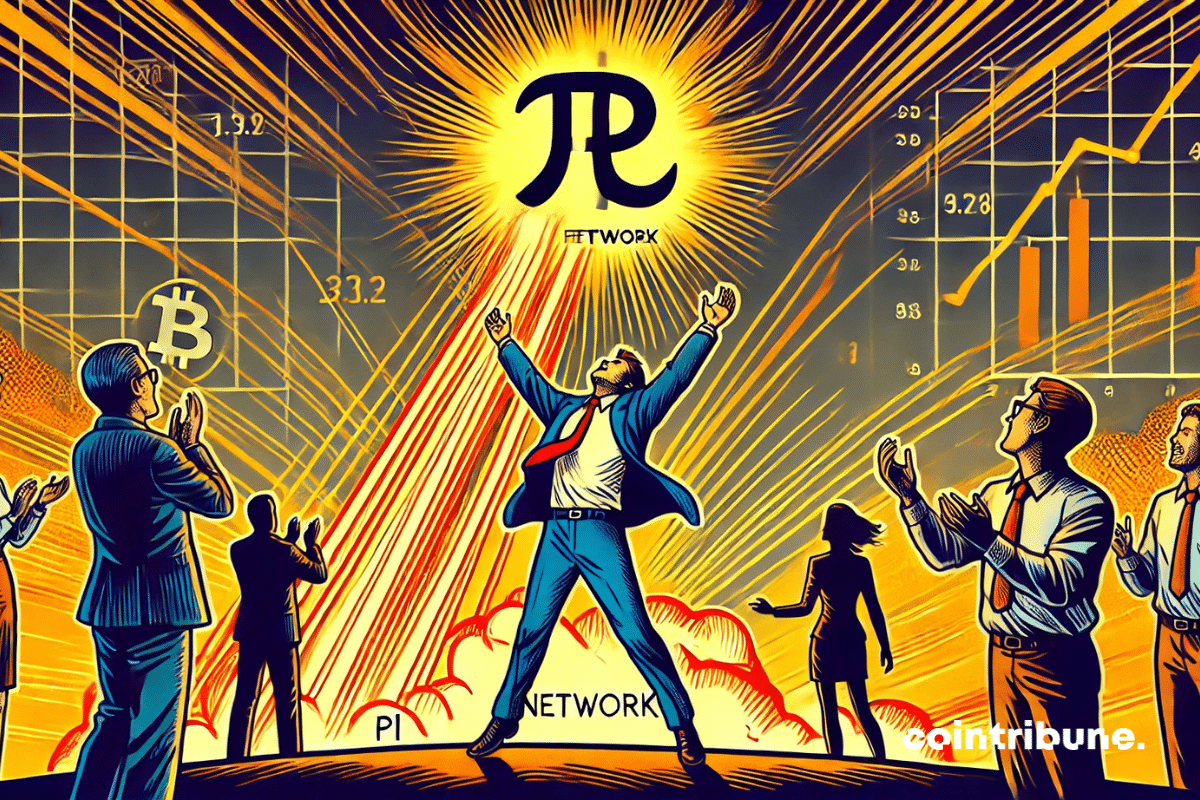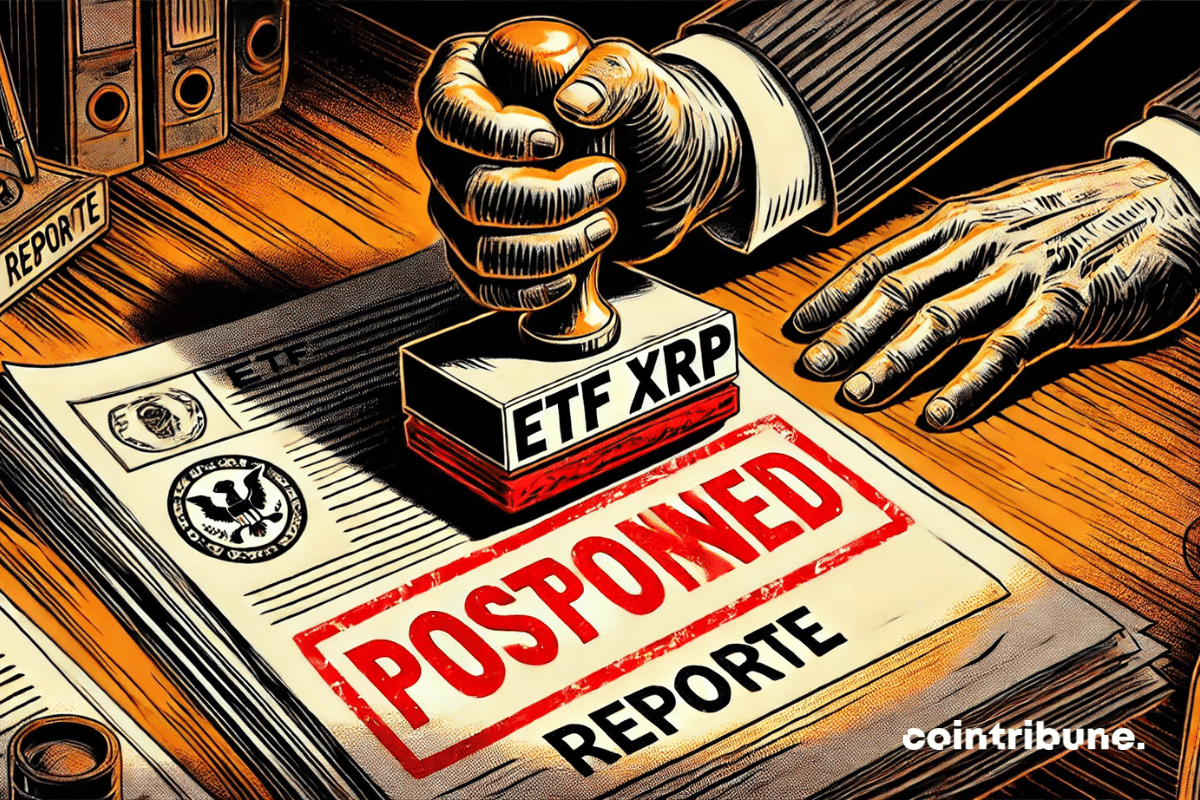In the trade tug-of-war between the United States and the European Union, a new episode has rekindled tensions. Indeed, Donald Trump, true to his protectionist approach, is once again wielding the threat of massive tariffs, this time on European wines and champagnes. The announcement of a 200% tax on these products follows Brussels' decision to increase tariffs on American whiskey to 50%.
Home » Archives for Luc Jose Adjinacou » Page 9
Luc Jose A.
Diplômé de Sciences Po Toulouse et titulaire d'une certification consultant blockchain délivrée par Alyra, j'ai rejoint l'aventure Cointribune en 2019. Convaincu du potentiel de la blockchain pour transformer de nombreux secteurs de l'économie, j'ai pris l'engagement de sensibiliser et d'informer le grand public sur cet écosystème en constante évolution. Mon objectif est de permettre à chacun de mieux comprendre la blockchain et de saisir les opportunités qu'elle offre. Je m'efforce chaque jour de fournir une analyse objective de l'actualité, de décrypter les tendances du marché, de relayer les dernières innovations technologiques et de mettre en perspective les enjeux économiques et sociétaux de cette révolution en marche.
The European financial landscape has just undergone a major turning point with the European Central Bank's (ECB) decision to lower its key interest rates by 0.25 percentage points. This measure does not go unnoticed in a context where access to mortgage credit remains a key issue for households and investors. This decrease could stimulate demand and reshape market dynamics, but observers remain divided on its actual impact.
Financial markets have their own memory, and cryptocurrencies are no exception. Thus, when an asset shows alarming similarities to a past crash, analysts sound the alarm. Ethereum, the second largest crypto on the market, sees its price plummet, reviving the specter of the March 2020 crash. Trader Ted Pillows claims that the current behavior of the ETH market almost mirrors the capitulation of that dark period, suggesting a scenario where the asset could drop to as low as 1400 dollars.
The SEC's case against Ripple is reaching a decisive turning point. After more than four years of legal confrontation, the U.S. Securities and Exchange Commission (SEC) appears ready to close this emblematic case. This trial, one of the most publicized in cryptocurrency history, has raised a fundamental question: Is XRP a financial security subject to U.S. stock market regulations? While the stakes extend far beyond Ripple and its native token, the outcome of the case could reshape the regulatory approach to cryptocurrencies in the United States.
The crypto market is unpredictable, as it fluctuates between periods of euphoria and significant corrections. Among the most followed assets, Pi Network is generating increasing interest. Within 24 hours, its price saw a staggering increase of 20%, reaching $1.74, despite a discount of 44% from its all-time high of $2.99. This sudden surge raises questions: is it a precursor signal for broader adoption or merely a speculative push fueled by strategic announcements? Two factors appear to have triggered this movement: the anticipation of Pi Day and rumors of a possible listing on Binance.
The rapid rise of the Solana network at the beginning of the year seemed to herald a new era for its ecosystem. Fueled by an unprecedented speculative frenzy around memecoins, the blockchain recorded record revenues, reaching $55.3 million per week. However, the party was short-lived. Within weeks, the excitement evaporated, leading to a brutal collapse. Today, Solana's weekly revenues have fallen back to $4 million, a staggering drop of 93%. This sudden turnaround raises a central question: Can Solana survive the end of this euphoria and find a sustainable growth model? On one hand, the frenzied speculation around meme coins has revealed an undeniable pull of the network, but on the other hand, its dependence on these ultra-volatile tokens undermines the entire economy.
The crypto industry is holding its breath in the face of still hesitant regulation. While enthusiasm for crypto ETFs grows, the U.S. Securities and Exchange Commission (SEC) has just postponed its decision on an important request: the conversion of the Grayscale XRP Trust into an ETF. This delay, announced on Tuesday, highlights the increased regulatory challenges surrounding these assets, even as crypto-related financial products gain legitimacy among institutional investors. Amid regulatory uncertainties and the expansion strategies of major asset managers, the wait continues for supporters of an XRP ETF.
Bitcoin has plunged to $76,700, marking its lowest level in four months amid global economic turmoil. Indeed, the 30% drop from its all-time high of $109,350 has reignited discussions about a possible trend reversal, as some observers question the sustainability of the bullish cycle. However, several indicators suggest that this correction could represent a strategic entry point for investors. On one hand, financial markets remain under pressure with persistent economic uncertainties, while on the other hand, the BTC derivatives market shows unexpected strength. So, has Bitcoin reached its ultimate floor before a rebound?
The global economic order is trembling under the impact of protectionist decisions from the United States. While the BRICS aim to reduce their dependence on the dollar, a major upheaval could be on the horizon. The resurgence of American tariffs could fuel a rise in the greenback, threatening to weaken emerging economies and hinder their efforts for dollarization. This potential rise of the dollar, far from being trivial, could mark a turning point for global monetary balance.
The crypto market is going through a phase of uncertainty, where every technical indicator is scrutinized closely. Solana, long considered one of the most promising projects in the sector, finds itself at a decisive crossroads today. As its price records a notable drop, a feared signal from analysts threatens to increase the pressure: the death cross. This technical event, often interpreted as a bearish indicator, could well influence investor behavior and trigger a new cycle of volatility. But is this signal really heralding a prolonged downtrend, or could it precede an unexpected rebound?
The world of cryptocurrencies is used to spectacular fluctuations, but certain fund movements raise more questions than others. In the span of a week, $1.8 billion of ETH left exchanges. Such a volume of withdrawals had not been observed since December 2022, raising questions about the market's state and investors' strategies. Should this be seen as a sign of mistrust towards Ethereum or, conversely, as a mark of confidence in its long-term valuation potential? Between bullish interpretation and economic uncertainty, this dynamic could reshape the landscape of the crypto market.
The evolution of the Canadian political landscape could disrupt the crypto ecosystem. Mark Carney, former governor of the Bank of Canada and the Bank of England, has just been appointed to succeed Justin Trudeau. His rise to power does not go unnoticed, particularly in the crypto sector. Known for his sharp criticisms of bitcoin, Carney has previously described the asset as a deficient monetary model, which fueled a "global speculative mania." His vision, rooted in a centralized approach to finance, suggests a restrictive policy towards cryptos. As Canada continues to seek its regulatory guidelines for these assets, Carney's appointment could represent a radical shift. His influence on the future of bitcoin and cryptos in Canada deserves close scrutiny.
Amid revolutionary announcements, technological advancements, and regulatory turbulence, the crypto ecosystem continues to prove that it is both a realm of limitless innovations and a battlefield of regulatory and economic conflicts. Here is a summary of the most significant news from the past week surrounding Bitcoin, Ethereum, Binance, Solana, and Ripple.
Investors are closely monitoring every signal from the American Federal Reserve (Fed), whose monetary policy could trigger a bear market. While some were hoping for rate cuts as early as 2024, the latest statement from Fed Chair Jerome Powell has dampened those expectations. The absence of rate reductions could put pressure on financial markets, particularly on risky assets like Bitcoin. Economist Timothy Peterson warns: if the Fed does not cut rates by 2025, the Nasdaq could collapse, dragging the cryptocurrency market along with it. A new correction of Bitcoin below $70,000 is now a serious possibility.
The financial story of the United States may well be on the brink of a major turning point. As the national debt reaches new heights and economic tensions escalate, a key player in the crypto sector, Michael Saylor, proposes a bold strategy: to make bitcoin a national strategic asset. At a summit held at the White House, the founder of Strategy advocated for massive investment by the U.S. government in bitcoin, suggesting that the United States should acquire up to 25% of the total supply by 2035. This proposal, as ambitious as it is controversial, relies on a long-term vision in which bitcoin would become a pillar of American economic prosperity. In response to this announcement, the White House has already taken a first step by signing a decree that establishes a strategic reserve of bitcoin.














